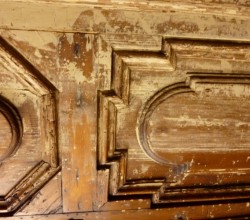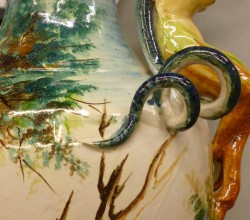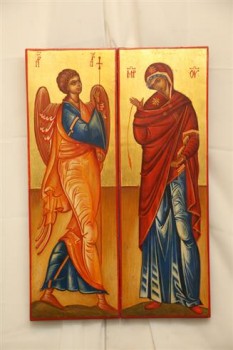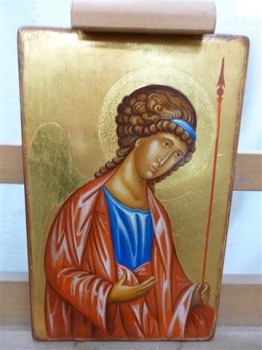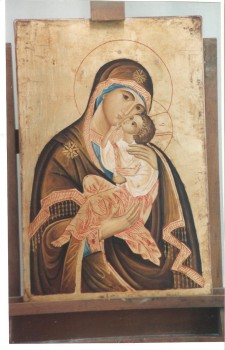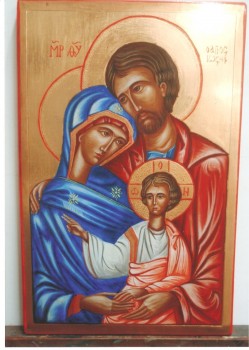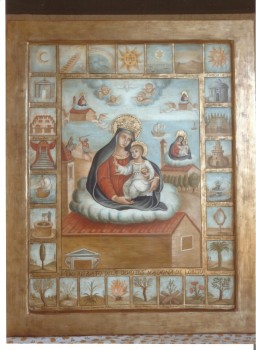What is an icon?
The icon is a sacred portrayal painted on panels, produced within the framework of Byzantine and Slavic culture.
The details are never purely decorative, but rather, they express recognisable symbols and meanings.
For an iconographer, a person who produces an icon is a graphos, a writer. The rules that an iconographer must abide by are contained in specific manuals, hermeneia, the most famous of which is by Dionysius of Fourna, and it dates back to the beginning of the XVIII century.
Ippoliti and the Byzantine icons
1989 – The Berlin wall comes down. The Orthodox culture of the former Soviet states begins to seep into Italy and with it, its spirituality, its images and its icons.
1990 – Andrea Ippoliti is asked to create an icon for the first time in 1990, for a wedding, where the icon was being given as a wedding present.
It was relatively simple to combine the techniques he had already mastered from restoration, with his skilful drawing ability. From that, an interesting production stemmed for the artist. Orthodox culture, which brought with it iconographical images brimming with sweetness, melancholy, psychological reflection, theological and historical symbols, stimulates and arouses passion, bringing more and more demands for this sort of work into Ippoliti’s studio.
THE ICON AS A WEDDING GIFT OR TO MARK IMPORTANT EVENTS
Clients request the reproduction of Byzantine icons to mark important life occasions, such as weddings, christenings, important dates in life, with the aim of giving the gift of unique works of art, that are densely packed with meaning.
With the commissioning party, the most appropriate subject matter is identified for the person who will receive the icon as a gift, the size is established together, which, within certain limits, does not alter the price, and if requested, thoughts, invocations, and indeed wishes may be inserted on the rear or concealed on the front.
Clients may therefore consult a vast range of subject matters to be reproduced or they may themselves bring their own chosen image with them.
How Byzantine icons are created
The icons are created in compliance with the ancient painting techniques, which are the same throughout all the European countries of the era, perfectly defined in the Libro dell’Arte (The Craftsman’s Handbook) by Cennino Cennini, written at the end of the XIV century.
If this were not the case, the end result would be different and it would not be comparable to the original icons, especially as regards the gold backgrounds: only gilding executed in gouache with 24k gold and polished on stone, can produce the necessary light to grasp the reflection of the onlooker.
